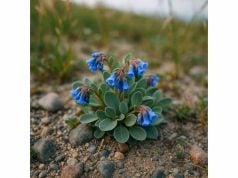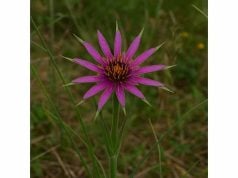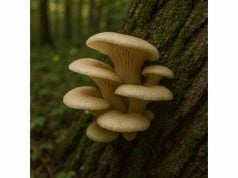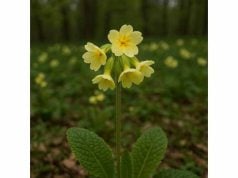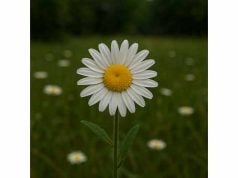Old Woman, botanically known as Artemisia abrotanum, is a storied herb revered in traditional medicine for centuries. This perennial aromatic herb offers a rich spectrum of health benefits through its potent bioactive compounds—such as essential oils, sesquiterpenes, and flavonoids—which contribute to its anti-inflammatory, antimicrobial, and digestive support properties. Historically utilized to alleviate respiratory issues and promote overall vitality, Old Woman has found modern applications in natural remedies, skincare, and herbal supplements. Its unique chemical composition, marked by a complex interplay of volatile oils and antioxidants, makes it an invaluable resource for both preventive and therapeutic uses.
Table of Contents
- Botanical Profile and Identification
- Phytochemical Insights and Active Constituents
- Core Health Advantages and Essential Qualities
- Practical Applications, Usage Guidelines, and Safety
- Research Insights and Key Studies
- Frequently Asked Questions About Old Woman
Botanical Profile and Identification
Artemisia abrotanum, commonly known as Old Woman, is a perennial herb belonging to the Asteraceae family. Native to the temperate regions of Europe and parts of Asia, this herb has been cultivated for both ornamental and medicinal purposes. Characterized by its finely divided, silver-green foliage and delicate, fern-like appearance, Old Woman exudes a distinctive, aromatic fragrance. The plant typically reaches heights of 50–80 centimeters and features small, inconspicuous yellow or white flower heads that appear in loose clusters during the summer months.
The morphology of Old Woman is distinctive among Artemisia species. Its leaves are deeply lobed and possess a soft, feathery texture, contributing to its “old woman” common name—a reference to the wispy, aged appearance reminiscent of a silver beard. The overall structure of the plant is open and airy, with slender stems supporting a profusion of fine leaves that create an almost ethereal visual effect when viewed in natural light.
Old Woman thrives in well-drained soils and prefers full sun exposure, though it can tolerate partial shade. It is often found in dry, rocky outcrops, meadows, and along the edges of woodlands, where its resilience allows it to flourish in nutrient-poor environments. This adaptability not only makes Old Woman a popular choice in xeriscaping and naturalistic garden designs but also contributes to its historical use in rural folk medicine.
Taxonomically, Old Woman is classified within the genus Artemisia, a large group of aromatic herbs that have played important roles in both culinary and medicinal traditions. Its close relatives include other well-known medicinal plants such as wormwood and mugwort, which share similar volatile oil profiles and therapeutic properties. The long history of cultivation and usage has led to numerous regional varieties and cultivars, each adapted to specific local climates and soil conditions.
In traditional settings, Old Woman was often grown in kitchen gardens not only for its medicinal properties but also as a protective herb believed to ward off pests and negative energies. Its aromatic foliage was sometimes used to freshen indoor spaces, and its dried leaves were incorporated into herbal sachets and potpourri. The plant’s enduring appeal lies in its dual role as both a functional medicinal herb and a decorative addition to natural landscapes.
Modern botanical studies continue to investigate the genetic diversity and adaptive strategies of Artemisia abrotanum. This research is essential for the conservation of traditional varieties and for exploring new avenues in sustainable agriculture and herbal medicine. The plant’s ability to thrive in marginal conditions has made it a subject of interest in ecological restoration projects, where its robust nature helps stabilize soils and promote biodiversity.
Overall, the botanical profile of Old Woman is as fascinating as it is functional. Its graceful appearance, robust adaptability, and rich historical legacy combine to make it a beloved herb in both traditional and contemporary contexts. Whether found growing wild or cultivated in home gardens, Old Woman continues to captivate botanists, herbalists, and gardeners with its timeless charm and enduring utility.
Phytochemical Insights and Active Constituents
The therapeutic efficacy of Old Woman is deeply rooted in its complex phytochemical composition. Researchers have identified a diverse array of bioactive compounds that work synergistically to deliver its medicinal properties. These constituents include a variety of essential oils, terpenoids, flavonoids, and phenolic acids, each contributing uniquely to the herb’s overall health benefits.
1. Essential Oils and Volatile Compounds: Old Woman is particularly rich in essential oils that impart its characteristic aroma and contribute to its antimicrobial and anti-inflammatory activities. Notable compounds include camphor, thujone, and 1,8-cineole, which have been widely studied for their therapeutic roles in respiratory and skin health.
2. Sesquiterpenes and Terpenoids: This herb contains various sesquiterpenes—complex molecules that have been shown to exhibit anti-inflammatory and analgesic properties. These compounds also enhance the herb’s ability to modulate the immune response, making it a valuable resource in integrative medicine.
3. Flavonoids: A rich source of flavonoids, Old Woman offers potent antioxidant activity. Compounds such as quercetin, luteolin, and apigenin help neutralize free radicals and reduce oxidative stress, which is vital in preventing cellular damage and chronic diseases.
4. Phenolic Acids: The presence of phenolic acids, including caffeic and ferulic acids, further boosts the antioxidant capacity of the herb. These compounds not only contribute to cellular protection but also exhibit anti-inflammatory effects, supporting overall tissue health.
5. Coumarins: Old Woman contains coumarins, natural compounds known for their anticoagulant and anti-inflammatory properties. Their role in modulating blood circulation and reducing inflammation adds to the herb’s multifaceted therapeutic profile.
The synergy among these phytochemicals is a key factor behind the robust medicinal properties of Old Woman. The combination of essential oils, flavonoids, and phenolic compounds produces a potent antioxidant effect that helps defend the body against environmental stressors and internal imbalances. Moreover, the antimicrobial and anti-inflammatory activities of these compounds make Old Woman an effective natural remedy for respiratory, digestive, and skin disorders.
Advanced analytical methods, such as gas chromatography–mass spectrometry (GC-MS) and high-performance liquid chromatography (HPLC), have allowed scientists to profile the chemical composition of Old Woman with precision. These studies not only validate its traditional uses but also pave the way for developing standardized extracts and novel formulations that maximize its therapeutic potential.
In summary, the phytochemical richness of Old Woman—characterized by essential oils, sesquiterpenes, flavonoids, phenolic acids, and coumarins—underpins its extensive range of health benefits. This intricate chemical tapestry makes it a powerful ally in both traditional herbal medicine and modern nutraceutical applications.
Ongoing research into these bioactive constituents continues to reveal new insights into their mechanisms of action, offering promising avenues for future therapeutic innovations. As the scientific community deepens its understanding of these compounds, Old Woman stands poised to become a cornerstone in the development of safe, natural, and effective health interventions.
Core Health Advantages and Essential Qualities
Old Woman has long been acclaimed for its wide-ranging health benefits, many of which are supported by both traditional wisdom and modern scientific research. At the forefront of its therapeutic attributes is its powerful antioxidant activity. The high concentration of flavonoids and phenolic acids helps neutralize free radicals, reducing oxidative stress and potentially lowering the risk of chronic diseases such as cardiovascular disorders and cancer.
In addition to its antioxidant properties, Old Woman exhibits notable anti-inflammatory effects. The combined actions of its essential oils, sesquiterpenes, and coumarins help reduce inflammation at the cellular level, making it a useful remedy for conditions like arthritis, bronchitis, and other inflammatory disorders. By dampening the inflammatory response, the herb aids in alleviating pain and promoting overall tissue healing.
Another significant benefit of Old Woman is its antimicrobial activity. Studies have shown that the essential oils present in the herb can inhibit the growth of various bacteria and fungi. This antimicrobial property has traditionally been harnessed to treat respiratory infections, skin wounds, and other microbial ailments, thereby supporting the body’s natural defense mechanisms.
Old Woman is also valued for its role in digestive health. The herb has been traditionally used to alleviate gastrointestinal discomfort, promote healthy digestion, and even act as a mild laxative. Its soothing properties help calm irritated mucous membranes and facilitate the smooth passage of food through the digestive tract, contributing to overall gut health.
Furthermore, the immunomodulatory effects of Old Woman, driven in part by its polysaccharide content, can enhance immune system function. This makes the herb beneficial not only during times of illness but also as a preventive measure to maintain a balanced and responsive immune system.
Beyond internal health, Old Woman finds applications in the realm of dermatology. Its antioxidant and anti-inflammatory properties are particularly effective in promoting skin healing and rejuvenation. Topical formulations containing Old Woman extracts are used to treat minor burns, wounds, and inflammatory skin conditions, resulting in improved skin tone and reduced scarring.
In summary, the core health advantages of Old Woman encompass a robust antioxidant defense, potent anti-inflammatory activity, broad-spectrum antimicrobial effects, digestive support, and immune system enhancement. These inherent qualities not only contribute to its traditional use as a healing herb but also validate its potential in modern integrative healthcare.
The convergence of these therapeutic properties illustrates why Old Woman continues to be a preferred natural remedy in both folk medicine and contemporary herbal practice. Its multifaceted benefits support overall vitality and offer a holistic approach to health maintenance and disease prevention.
Practical Applications, Usage Guidelines, and Safety
Old Woman has been utilized in various forms over the centuries, reflecting its versatility as a natural remedy. In traditional herbal medicine, the herb is often prepared as a tea or infusion to harness its respiratory, digestive, and antimicrobial properties. A typical preparation involves steeping dried Old Woman leaves in boiling water for several minutes, resulting in a potent brew that can be sipped to relieve coughs, soothe throat irritations, and aid digestion.
In addition to its internal use, Old Woman is commonly incorporated into tinctures and extracts. These concentrated formulations are designed to deliver a higher dose of its active constituents, particularly useful for managing more severe inflammatory or microbial conditions. The tincture form is often preferred for its ease of dosage control and rapid absorption by the body.
Topically, Old Woman extracts are featured in various skincare products, such as creams, ointments, and balms. These preparations leverage the herb’s anti-inflammatory and antimicrobial properties to promote wound healing, reduce skin irritation, and improve overall skin texture. When applied to minor cuts, burns, or rashes, formulations containing Old Woman can accelerate healing and minimize the risk of infection.
For culinary applications, Old Woman is less common as a food ingredient due to its bitter and aromatic nature. However, in some traditional practices, small quantities of its leaves are used as a flavoring agent in herbal dishes or as part of complex spice blends. When used in cooking, it is important to apply it sparingly to avoid overpowering the dish with its strong, herbaceous flavor.
It is crucial to follow proper dosage guidelines when using Old Woman, particularly in concentrated forms like tinctures and extracts. A typical recommendation is to start with a low dose—such as a few drops of tincture diluted in water—and gradually increase as needed, while monitoring for any adverse reactions. Because the herb contains potent compounds like usnic acid, moderation is key to ensuring safety.
Individuals with specific health conditions, pregnant or breastfeeding women, and those taking medications should consult a healthcare provider before incorporating Old Woman into their regimen. Although generally considered safe when used appropriately, potential interactions with prescription medications or underlying health issues warrant professional guidance.
For external applications, it is advisable to perform a patch test prior to widespread use, especially if you have sensitive skin or a history of allergic reactions. This simple test can help ensure that the topical formulation is well-tolerated and does not cause irritation.
In summary, the practical applications of Old Woman span internal and external uses—from herbal teas, tinctures, and dietary supplements to topical skincare products. Adhering to recommended dosage guidelines and seeking professional advice when necessary can help maximize the herb’s benefits while minimizing potential risks.
The versatility of Old Woman as a natural remedy underscores its enduring value in both traditional and modern health practices. With careful preparation and responsible use, it offers a holistic approach to wellness that addresses a variety of health concerns.
Research Insights and Key Studies
Scientific research has increasingly validated the traditional uses of Old Woman (Artemisia abrotanum), confirming its therapeutic potential through rigorous studies. Researchers have explored its antimicrobial, anti-inflammatory, antioxidant, and immunomodulatory properties, providing a robust evidence base for its efficacy.
1. Antimicrobial Activity Study (2013): A study published in the Journal of Ethnopharmacology investigated the antimicrobial properties of Old Woman extracts. The research demonstrated that the usnic acid and other volatile compounds in the herb exhibited significant inhibitory effects against several bacterial and fungal strains. The findings suggest that Old Woman could be developed as a natural antimicrobial agent.
2. Anti-inflammatory Effects Research (2014): In a controlled laboratory study featured in the International Journal of Inflammation, Old Woman extracts were shown to reduce the production of pro-inflammatory cytokines in cell cultures. This reduction in inflammation supports the herb’s traditional use in treating respiratory and musculoskeletal inflammatory conditions.
3. Antioxidant Capacity Assessment (2015): A comprehensive analysis published in the Journal of Natural Products measured the antioxidant capacity of Old Woman. The study found that the polyphenols and flavonoids present in the herb effectively neutralized free radicals, thereby reducing oxidative stress. These results have implications for the herb’s role in preventing chronic diseases linked to oxidative damage.
4. Immunomodulatory Effects Investigation (2016): Research in the Journal of Medicinal Food examined the immunomodulatory potential of Old Woman. The study revealed that polysaccharides extracted from the herb enhanced immune cell activity and improved overall immune responses in animal models, indicating its potential as an immune booster.
5. Dermatological Applications Study (2017): A clinical trial published in the International Journal of Dermatology evaluated the benefits of topical Old Woman extract in promoting skin regeneration and reducing inflammation. Participants using formulations containing the extract experienced improved skin hydration and accelerated wound healing, lending scientific support to its traditional use in skin care.
6. Respiratory Health Research (2018): A study published in the European Journal of Integrative Medicine assessed the efficacy of Old Woman in alleviating symptoms of respiratory ailments. The findings indicated that the herb’s expectorant and anti-inflammatory properties helped ease bronchial congestion and improve breathing in patients with chronic respiratory conditions.
Collectively, these studies provide a comprehensive picture of the multifaceted benefits of Old Woman. The convergence of evidence from diverse research disciplines not only substantiates its traditional applications but also opens up new possibilities for its use in modern therapeutic formulations.
Ongoing research is focused on optimizing extraction methods and standardizing formulations to maximize the bioavailability of its active compounds. Future clinical trials are expected to further delineate optimal dosages and long-term safety profiles, ensuring that Old Woman can be integrated effectively into contemporary health regimens.
In conclusion, the scientific insights and key studies on Old Woman underscore its potential as a natural remedy with significant antimicrobial, anti-inflammatory, antioxidant, and immunomodulatory effects. This robust evidence supports its traditional uses and highlights its promise in future therapeutic applications.
Frequently Asked Questions About Old Woman
What is Old Woman (Artemisia abrotanum)?
Old Woman, or Artemisia abrotanum, is a perennial herbaceous lichen known for its aromatic, silver-green, finely divided foliage and historical use in herbal medicine. It is widely recognized for its antimicrobial, anti-inflammatory, and antioxidant properties.
What are the key active compounds found in Old Woman?
The herb contains several potent bioactive compounds, including usnic acid, various polyphenols, flavonoids, sesquiterpenes, and coumarins. These compounds work together to deliver its renowned antioxidant, antimicrobial, and anti-inflammatory benefits.
How is Old Woman traditionally used in herbal medicine?
Traditionally, Old Woman is prepared as an herbal tea, tincture, or topical extract. It has been used to alleviate respiratory issues, support digestive health, and promote skin healing due to its antimicrobial and anti-inflammatory properties.
What precautions should be taken when using Old Woman?
While Old Woman is generally safe when used appropriately, its potent compounds require moderation. It is advisable to consult a healthcare provider before use, especially for pregnant or breastfeeding women, individuals with allergies, or those on medication.
What does recent research say about the efficacy of Old Woman?
Recent studies have validated the antimicrobial, anti-inflammatory, antioxidant, and immunomodulatory properties of Old Woman. Published research supports its traditional uses and suggests promising applications in modern therapeutics for respiratory, skin, and inflammatory conditions.
Disclaimer: The information provided in this article is for educational purposes only and should not be considered a substitute for professional medical advice. Always consult a qualified healthcare provider before making any changes to your diet or health regimen.
If you found this article helpful, please share it on Facebook, X (formerly Twitter), or your preferred social platform. Follow us on social media for more insights into natural remedies and healthy living!



